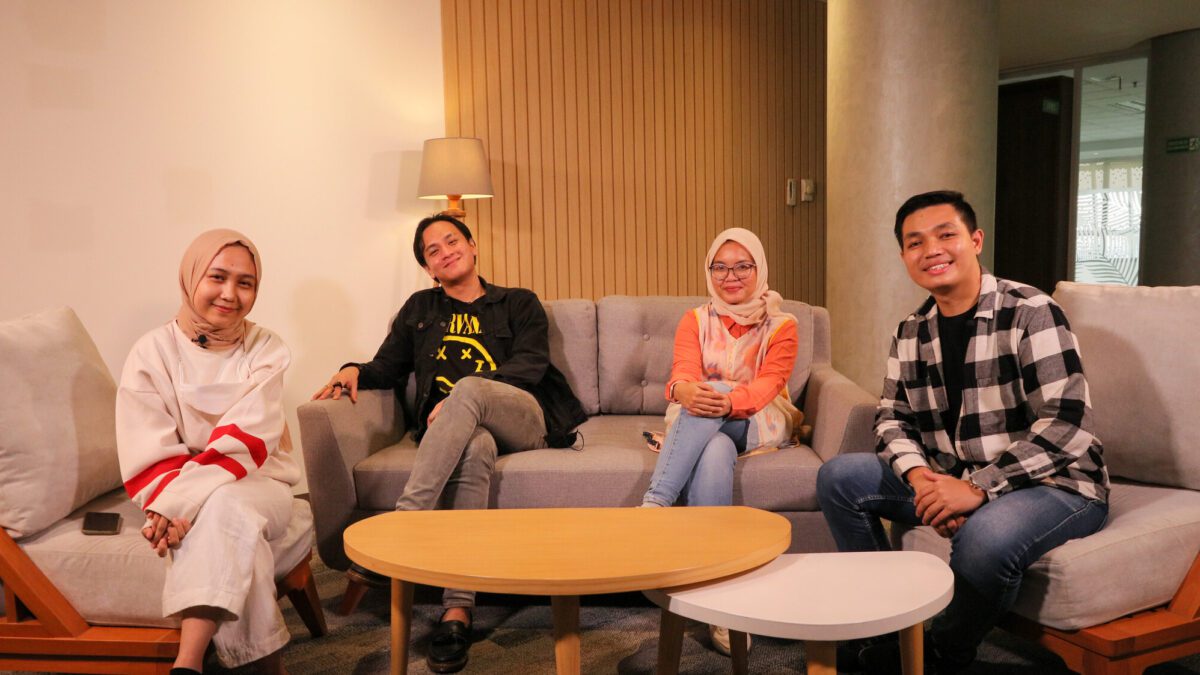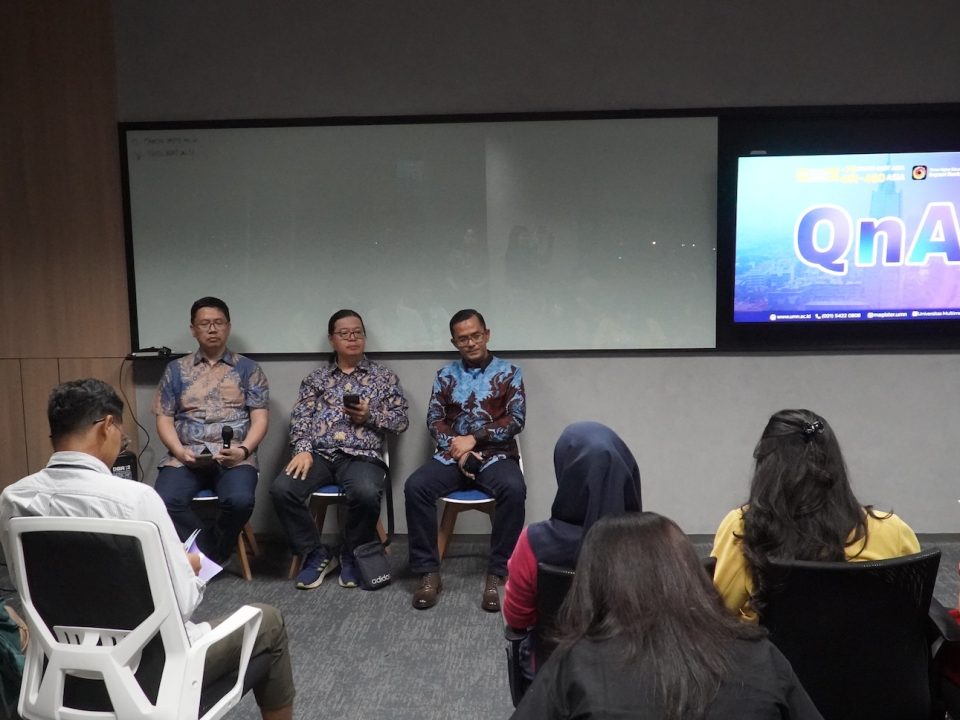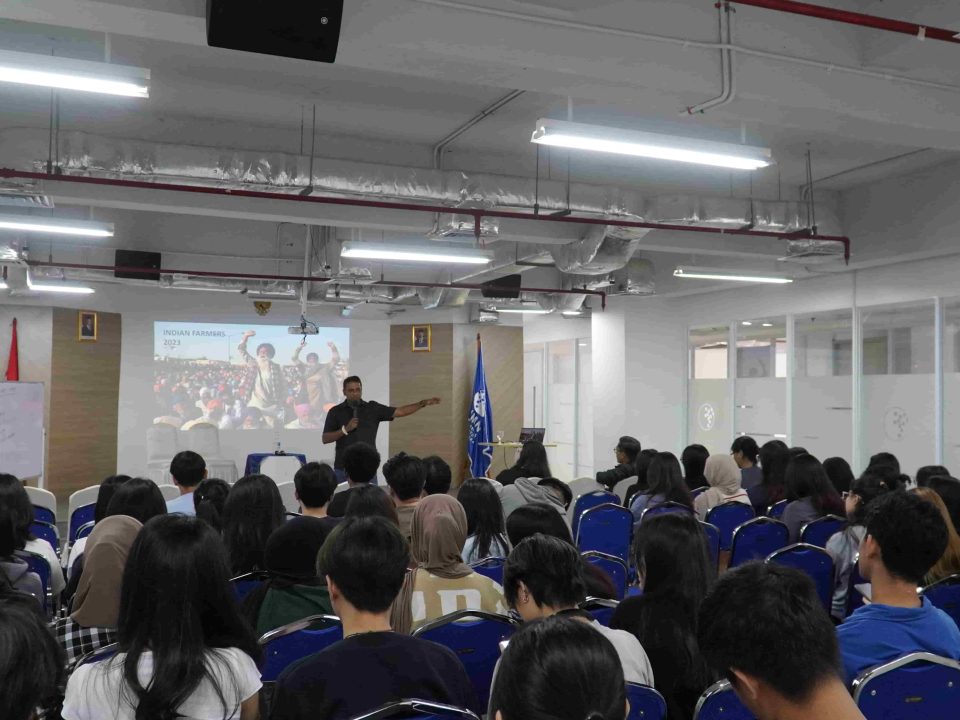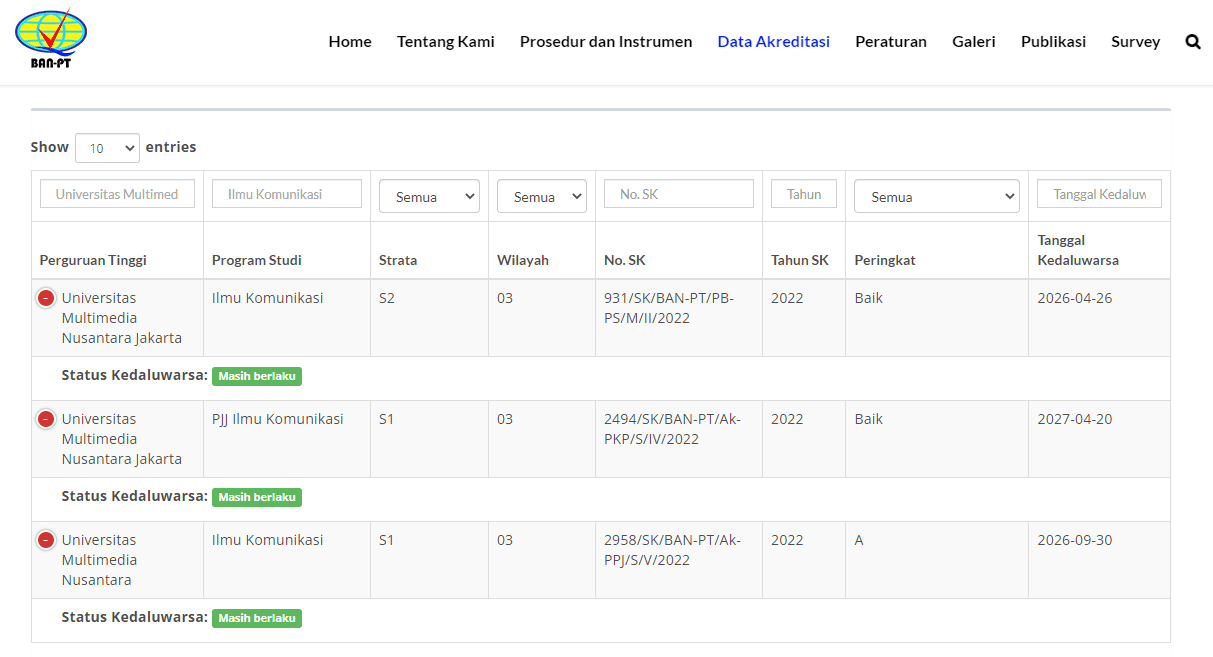
The Communications Study Program of UMN Maintains Their Accreditation A
June 23, 2022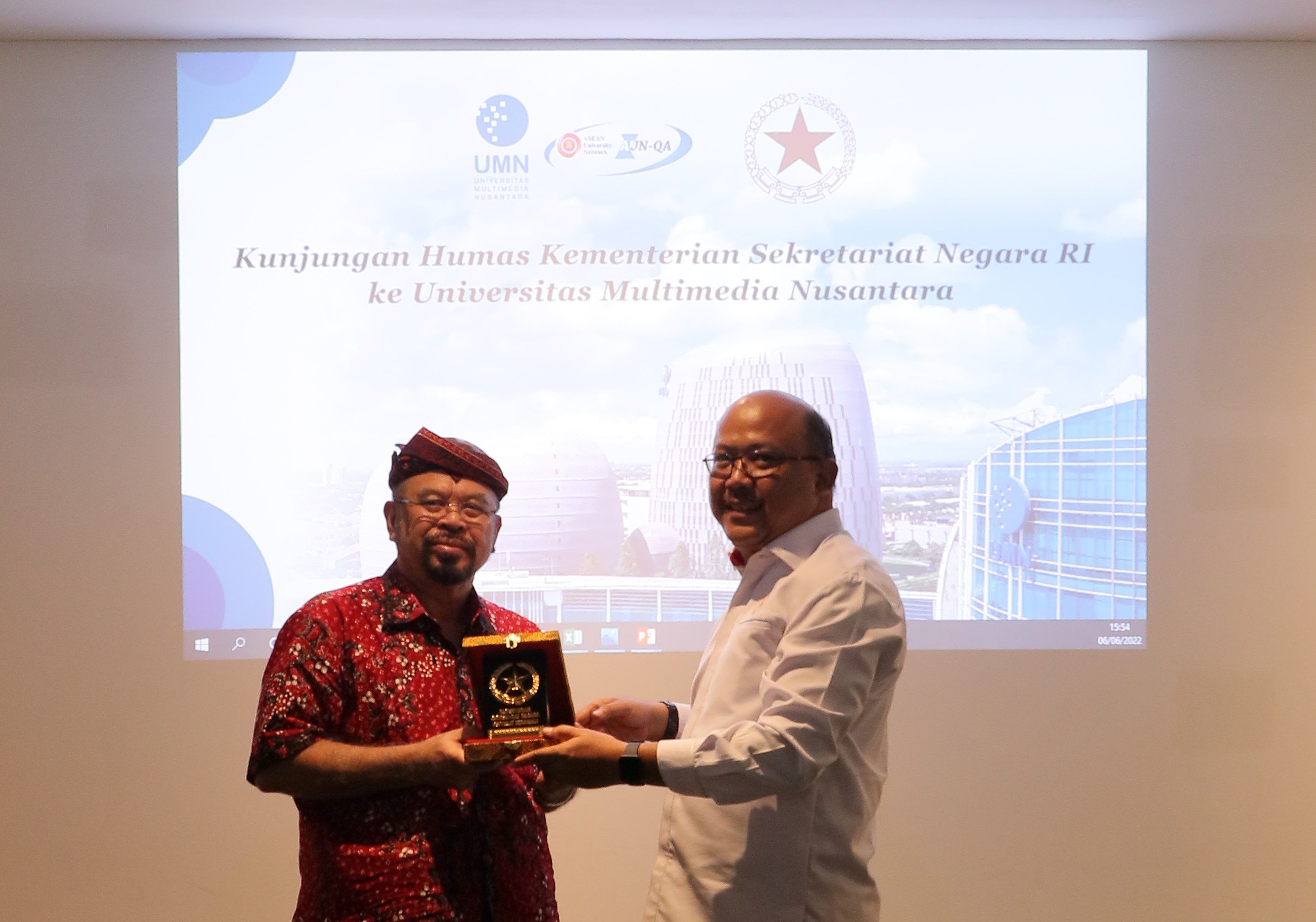
UMN and Kemensetneg Collaborate on Internship Programs
June 24, 2022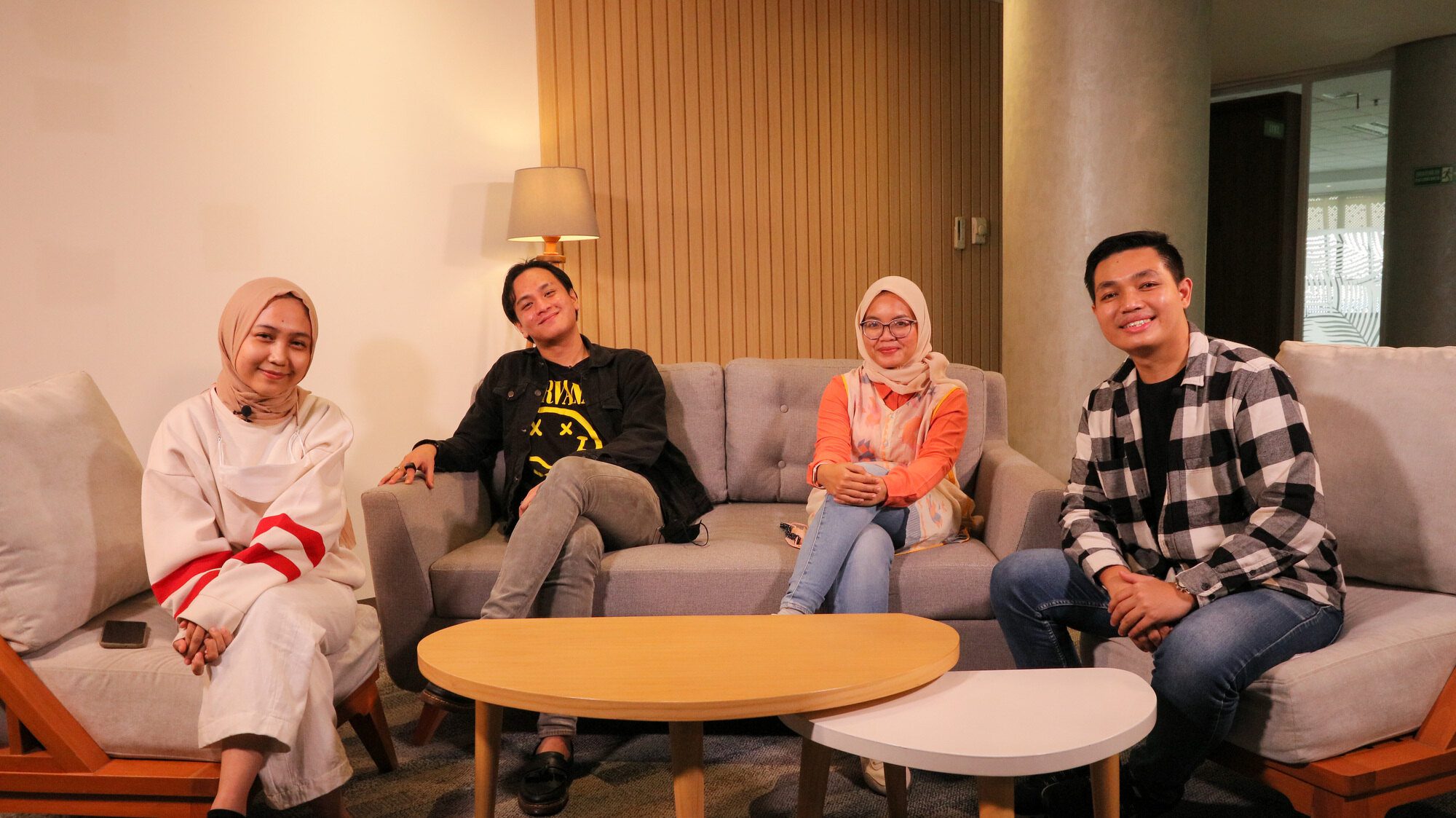 UMN Podcast with Laila Nurazizah and Gerald Mamahit. (Doc. UMN)
UMN Podcast with Laila Nurazizah and Gerald Mamahit. (Doc. UMN)
TANGERANG – Talent runs in Multimedia Nusantara University (UMN). Two UMN academics, Laila Nurazizah (Lele), a screenwriter also a Film lecturer at UMN, and Gerald Mamahit, a UMN Film student, are the screenwriters behind the Indonesian horror film “KKN di Desa Penari,” which recently became the highest-grossing Indonesian film of all time, reaching 9 million viewers.
KKN di Desa Penari is a horror movie based on a real-life story shared on Twitter by an account called “Simple Man” in 2019, which eventually became viral. It is about six students who experienced haunting and mystic experiences in a remote village called “Desa Penari.” In a UMN podcast, Lele and Gerald shared their interest in film, their experiences as screenwriters of KKN di Desa Penari, and how they eventually worked together.
Lele and Gerald’s Backstory
Both Lele and Gerald have always been interested in the film industry. Lele expressed how lucky it is for film lovers nowadays to study film and how important it is for them to make the best of it.
I always say this to my students, “you guys are lucky to be here, in a place (UMN) that celebrates and believes in your passions (film).” Back then, Lele wasn’t supported by her parents to fully commit to studying film and only allowed her to study film as a hobby. “Are you seriously thinking of majoring in Film?” Lele’s parents would defy her.
So, she took criminology at the University of Indonesia (UI) and on the side, she would join film festivals and write short stories. Eventually, she built her carrier as a screenwriter and proved her parents and everyone who doubted her wrong.
Gerald, too has been interested in film since he was young. He shared that he has always wanted to become a director since he was a kid.
“I remember I was looking for a good campus and seeing a list of ‘the best film universities in Indonesia,’ and I remember seeing UMN on the list. I hope, well, I believe UMN is still one of the best film universities in Indonesia,” Gerald said, sharing how he eventually chose UMN to study film.
Gerald shared that as the semester started, he recalls this fun moment in class where the students were immediately told to form a production team consisting of the director, producer, editor, etc. He wanted to take the director role, but unfortunately, all the teams already have a director. So, he had to resort to the closest role of a director, a scriptwriter. Thankfully, one group needed an additional member for a scriptwriter, and he then joined that team. His love for script and screenwriting has grown ever since. In future classes, he also got the chance to become a director and a scriptwriter simultaneously, enabling him to produce a story he wanted.
How Lele and Gerald Collaborated
Gerald shared that he first met Lele at a workshop conducted by a UMN lecturer on screenplay writing. At that time, Lele wasn’t a lecturer at UMN just yet. She was the manager and one of the speakers of the workshop.
“Funny thing, I was roasted by her during our first meeting in the workshop. I remember choosing ‘horror’ as my screenwriting theme, and she laughed at my work,” Gerald said while laughing. They then met again in an elective class of UMN’s Film Study Program, namely “Feature Length Script.”
“Feature Length Script is a class that is rarely found on other campuses. It is not easy to accommodate and have the students study how to write a long film screenplay with just 14 class meetings.” Lele shared. Seeing that UMN dares to have this class in their curriculum was one of the reasons why Lele wanted to become a lecturer at UMN and teach that class. For some information, Lele has been working as a professional screenwriter for years. She was involved in famous Indonesian horror movies like Danur, Asih2, and Ivanna.
Gerald shared that as he met Lele in class, Lele challenged and pushed him to take on a horror topic for the class screenwriting project. Gerald was nervous as he knew he was dealing with someone who’s very experienced in horror screenwriting. At that time, Lele has just finished screenwriting Danur 2. Not to forget, he was roasted the first time he met Lele at the workshop. But of course, Lele’s encouragement in class and Gerald’s ambitions most likely dug up Gerald’s truest potential.
When Lele took the offer to become a screenwriter for KKN di Desa Penari, she felt the need for a partner. She shared that Gerald popped into her mind. Lele thought, why not have a teacher-student collaboration and invite Gerald and work on the screenplay together?
“I see a lot of potential in the students in my class,” Lele proudly shared. Gerald is one of those students who showed plenty of potential in screenwriting. In addition to his potential, Gerald showed his passion for screenwriting by volunteering to become the class assistant several times, even after passing the class.
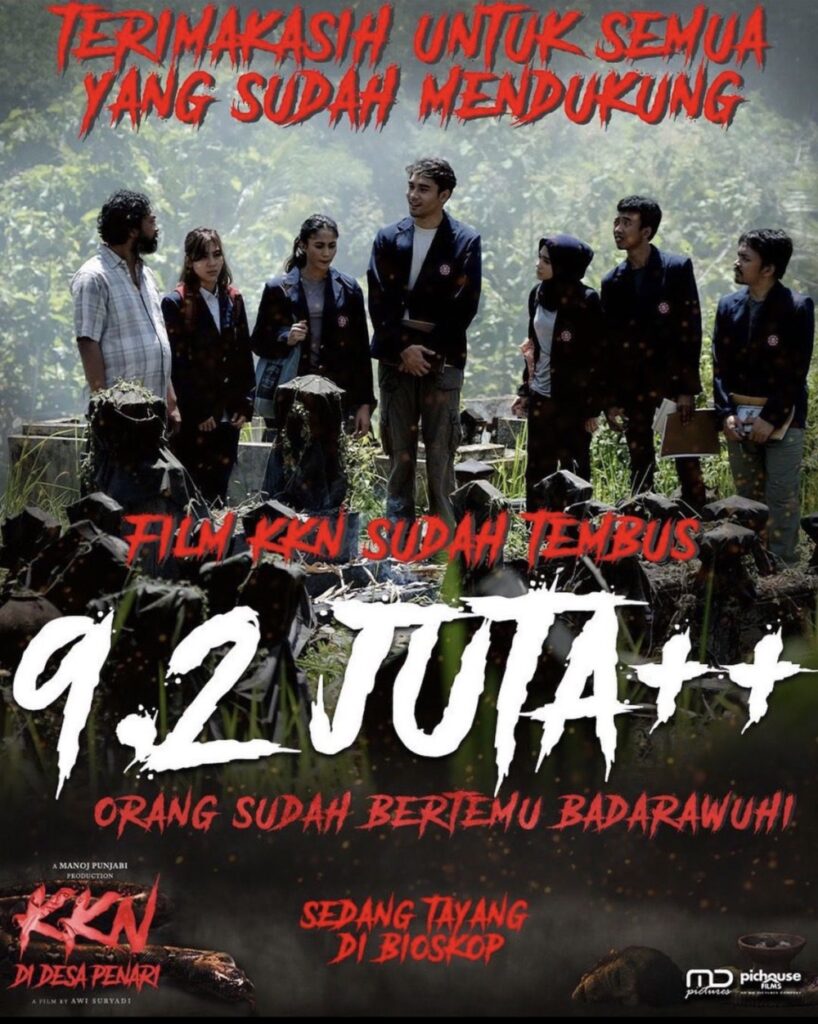 KKN di Desa Penari hits 9 million viewers. (Doc. Instagram @KKNMovie)
KKN di Desa Penari hits 9 million viewers. (Doc. Instagram @KKNMovie)
Challenges When Screenwriting KKN
Writing KKN’s screenplay wasn’t easy. Lele shared that she had been eyeing on that story before the KKN di Desa Penari story was viral on Twitter. “I have always known that the story will blow up and become a successful horror story,” Lele shared. Although this is a golden opportunity for the producer and writers, when the story becomes viral, the writing process must be sped up so the movie can be released at the right time.
“We spent countless nights at the office, doing intense research on the story and having to finish the first draft in two weeks,” Gerald and Lele shared.
Another challenge Gerald shared is that it’s difficult to maintain the honesty or originality of the story when doing an adaptation. Sometimes there are times when we writers want to add some elements to the story. Lele added that it’s completely fine to add adaptations, but sometimes viewers tend to compare (the film and the original story), thinking that adaptations may ruin the original story, or movies that don’t stick to the original story are considered bad. But with KKN di Desa Penari, she felt that the story didn’t need to be changed or added.
“We are seeing comments online saying that there are missing elements in the movie; there is a huge possibility of an extended version of KKN di Desa Penari,” Lele said, bringing excitement to the room.
When this article was written, MD Pictures confirmed that the extended version of KKN di Desa Penari (an additional 40 minutes) would be released in December 2022.
A Message for UMN Film Students
Closing the podcast, Lele and Gerald shared some important messages that every Film student should remember. It’s crucial for them to not take their study at UMN for granted if they genuinely want to become successful script or screenwriters.
Taking the writer behind the Simple Man account, Lele constantly warns her students that there are people out there with plenty of good stories and can tell those stories (storytelling). Sometimes, as students have all the access and facilities provided by their campus, they may feel lazy to find a good story.
“Your time on campus could be a waste of time. Hence, you have to make use of your days studying on campus so you wouldn’t fall behind and lose to people who may not have the same privilege (getting good facilities and lectures from campus) like you,” Lele noted. She also added that the curriculums are created and organized to ensure UMN students have the knowledge to dive deep into the film industry directly.
When asked how to start writing, Gerald firmly said, “just start writing!” Most people have all the ideas in their heads but wouldn’t write. In screenwriting, (obviously) the writing is the most essential part. Writers should be able to convey those ideas in their heads into their papers.
Screenwriters are one of the vital assets in film production, “they are the blueprint for films,” Gerald and Lele said.
“Starting is difficult, but what’s more difficult is maintaining your position. Maintaining your consistency and positioning in the industry is way more difficult than entering the industry,” Lele emphasized. Students should be grateful and take advantage of being able to study film, meet competent lecturers, study the best curriculums, and use and enjoy the top-notch facilities at UMN.
UMN again would like to congratulate Lele and Gerald for their incredible achievement and always wish them the best in their future endeavors. It is also hoped that more student-teacher collaborations can happen in the future!
Are you interested in studying Film with UMN? Find out more about the study program here.
*by Levina Chrestella Theodora | UMN News Service
Kuliah di Jakarta untuk jurusan program studi Informatika | Sistem Informasi | Teknik Komputer | Teknik Elektro | Teknik Fisika | Akuntansi | Manajemen| Komunikasi Strategis | Jurnalistik | Desain Komunikasi Visual | Film dan Animasi | Arsitektur | D3 Perhotelan | International Program, di Universitas Multimedia Nusantara. www.umn.ac.id

